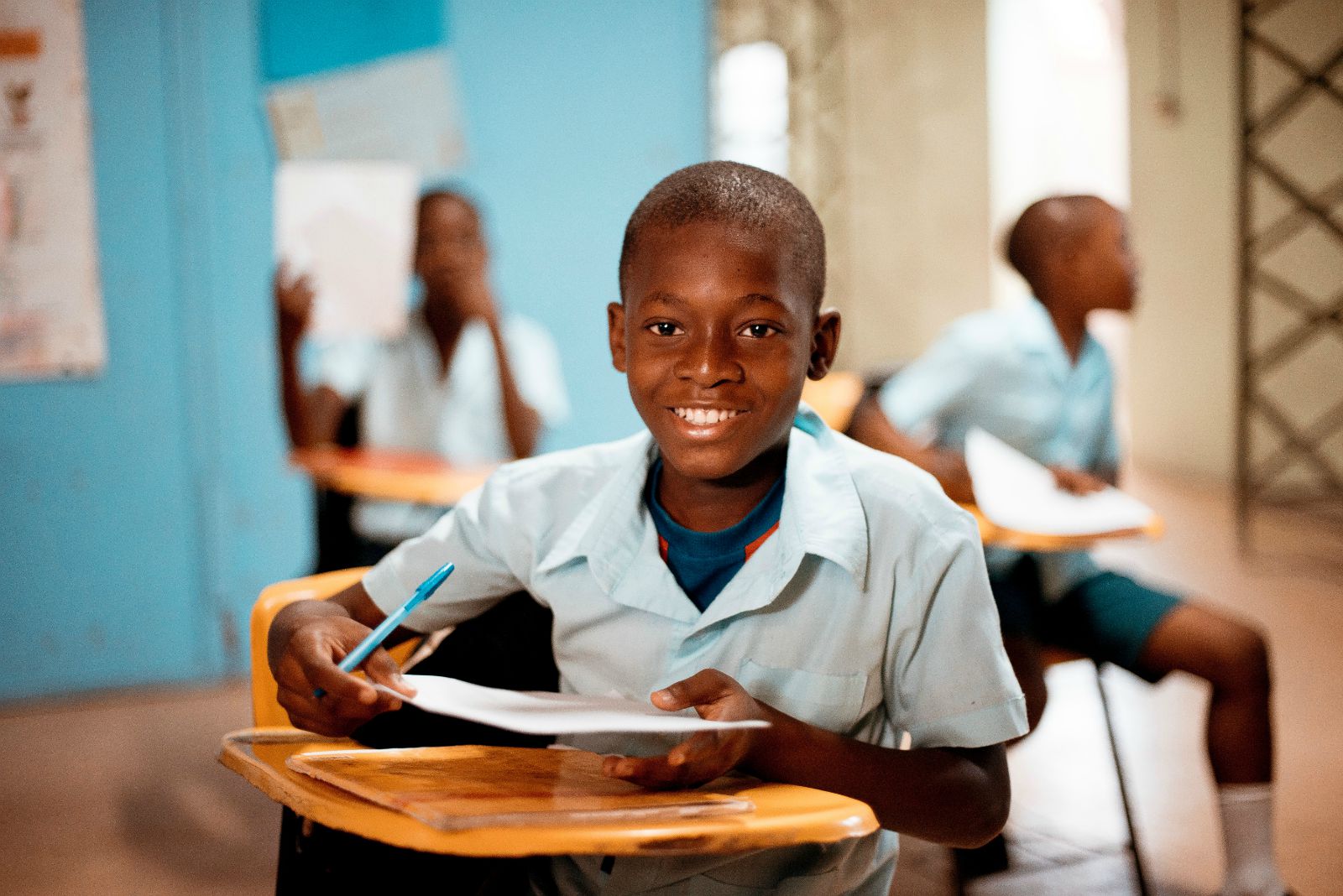Children should laugh
MFC :
INNOVATIVE TECHNOLOGY SOLUTIONS
to identify emerging technologies that have potentially transformative applications for global health.
At a glance :
We look far and wide for emerging technologies from both within and outside biomedicine that could be adapted to address major global health challenges.
We make targeted, short-term investments to determine the viability of applying these innovations to specific areas of global health.
We rapidly assemble teams of highly capable research partners to investigate application of these technologies as a proof of concept.
We connect other foundation programs with the most promising innovations and provide guidance on how to apply them in areas such as diagnostics, vaccines, and drug discovery.
Our Innovative Technology Solutions strategy is led by Dan Wattendorf and is part of the foundation’s Global Health Division.
Argument :
New technologies are emerging every day from industry, academia, and government labs—including advances in areas such as artificial intelligence, sensor networks, mobile communications, and bioengineering. Some of these technologies could have potentially transformative applications to improve human health, particularly in the developing world, but few institutions have the time or resources to investigate such long-shot opportunities.
The Opportunity:
Our foundation is uniquely situated to explore the universe of potentially valuable technologies and make targeted, short-term investments to investigate the viability of applying them to major global health challenges. Drawing on our vast partner network, including private industry and academia, we can quickly assemble highly capable research teams and initiate projects to determine within a two- to five-year period whether a particular technology is worthy of further investigation, investment, and adaptation. This is a much shorter timeline than would be typical for testing a health or medical technology.
Our Strategy :
We constantly refresh our portfolio of investments as we add new options for investigation and retire projects that do not prove to be viable. When a technology proves to be worthy of further investigation, we work to attract further investment from foundation programs, global health funders, governments, and other partners.
Examples of our projects include:
Developing a low-cost supplement to colostrum—the antibody-rich fluid that is the first stage of breast milk—using novel manufacturing platforms
Using computational science to develop small molecules that have antibody-like potency against infectious diseases such as malaria and tuberculosis
Using DNA encoding to introduce protection against viruses such as Zika and HIV
Engineering B-cells—the immune cells produced in the bone marrow—to serve as universal donor cells
Using automation and modular components to develop a health care infrastructure that employs sensor technology and low-cost molecular testing
Using antibody engineering to develop ultra-sensitive, low-cost rapid diagnostic tests for infectious diseases
NUTRITION
AT A GLANCE
Poor nutrition contributes to nearly half of all child deaths under age 5 and impairs the physical and mental development of millions of children.
More than 1 million child deaths could be averted each year by scaling up proven nutrition interventions.
We work to broaden the use of proven interventions, such as breastfeeding, and we support the development and testing of new solutions.
We work with other teams at the foundation—from Agricultural Development to Discovery & Translational Sciences—to broaden our collective learning and impact.
Our Nutrition strategy is led by interim director Mohamed B Saleh and is part of the foundation’s Global Development Division.
ARGUMENT
Each year, millions of children die and many more suffer from physical and mental impairments due to poor nutrition during a critical 1,000-day period: from the onset of their mother’s pregnancy to their second birthday. Many children who live in poverty simply don’t get enough food—or the right kind of food—to support normal growth and development. Millions also suffer from illnesses such as diarrhea that sap the nutrients they consume.
Nutrition-related factors contribute to about 45 percent of child deaths under age 5. Among undernourished children who survive, more than one quarter suffer from stunted growth, which can impair neurological development and learning.
Nutrition has been a neglected area of global health and development, accounting for less than 1 percent of global foreign aid. This is largely due to its underlying and often hidden role in child illnesses and deaths.
The problem starts before pregnancy. Women and girls who are not healthy and well-nourished are more likely to have malnourished children. Because poor nutrition compromises the immune system, children who are malnourished are more vulnerable to life-threatening infectious diseases as well as physical and cognitive impairments. This limits their ability to learn in school and reduces their productivity as adults—creating a vicious cycle that prevents families, communities, and countries from lifting themselves out of poverty.
Most undernourished people live in South Asia and Sub-Saharan Africa. Ten countries in those regions account for two-thirds of deaths attributable to poor nutrition. But even in those countries, most people who are undernourished do not show symptoms of extreme hunger or starvation. This “hidden hunger” is invisible to families, communities, and policymakers, which means that nutrition does not get enough attention and national nutrition programs are often underfunded.
Other challenges that contribute to malnutrition include inconsistent access to safe and affordable nutritious food; lack of awareness and understanding of healthy diets among those most at risk; low agricultural productivity (made worse by climate change); and poor sanitation and hygiene.
The Opportunity
Over the past decade, research has dramatically expanded our understanding of how to improve nutrition for women and children. We now know, for example, that it is critical to reach children within the 1,000-day period and reach women and adolescent girls before, during, and after pregnancy.
A number of nutrition interventions have been shown to significantly improve child health and survival. They include exclusive breastfeeding during the first 6 months of life, fortifying staple foods such as cereal flours and cooking oil and iodizing salt, breeding crops for improved nutritional content, and providing micronutrient supplements (such as vitamin A and zinc) to children and providing micronutrient supplements to mothers before and during pregnancy and while breastfeeding.
In places where these interventions have been broadly used, the results have been striking. In Brazil, for example, efforts to improve and align nutrition and agriculture interventions reduced stunting by 80 percent within a generation. In Vietnam, rates of exclusive breastfeeding have tripled since 2009 as a result of focused efforts to support mothers. Vitamin A supplementation, which helps reduce blindness and childhood death, is now reaching more than 70 percent of children in high-risk countries.
These tools must be scaled up to reach all mothers and children. At the same time, new solutions are also needed. Evidence suggests that fully scaling up current interventions would address only about half of the burden of malnutrition because of its complex causes.
Our Strategy
We invest in proven approaches to improving nutrition, such as focusing on the 1,000-day window, immediate and exclusive breastfeeding, complementary feeding, and food fortification and supplementation. We also explore new approaches, such as improving nutrition for women and adolescent girls, increasing advocacy and technical assistance, improving data systems, and strengthening food systems.
A new sweet potato variety that is rich in vitamin A is now widely available in eastern and southern Africa.
Our long-term goal is to ensure all women and children have the nutrition they need to lead healthy and productive lives.
We work closely with governments, the United Nations, bilateral agencies, nongovernmental organizations, and the private sector, and we collaborate with other teams within the foundation—from Agricultural Development to Discovery & Translational Sciences—to broaden our collective learning and impact.
The cornerstone of our strategy is our partnerships with several high-burden countries—Bangladesh, Burkina Faso, Ethiopia, India (with a focus on Bihar and Uttar Pradesh), and Nigeria—to demonstrate what can be achieved by expanding the use of proven interventions and developing and introducing new solutions.
In each country, we work with partners to show how these interventions can be introduced and expanded in specific contexts. We also work closely with key partners—including Alive & Thrive, Helen Keller International, HarvestPlus, and the Global Alliance for Improved Nutrition (GAIN)—to apply successful approaches and practices to other countries.
New Solutions
Despite significant research in the past few decades, knowledge about the immediate and underlying causes of unhealthy growth and development remains incomplete. We invest in research to understand the full range of causes of malnutrition, identify the right packages of interventions, and establish the best times to intervene.
We work closely with leading universities—including Cornell University; Johns Hopkins University; Oxford University; University of California, Davis; and University of Colorado—to develop, test, and roll out new solutions and address the obstacles to effective implementation, particularly barriers to reaching women and girls and addressing social and gender norms.


The MitiGas Fund for Children
The MitiGas Fund for Children (MFC)invests in undercapitalised organisations that provide critical services to vulnerable children. The Fund finds and supports grass roots organisations worldwide to transform the lives of children on the edges of society–trafficked children, refugees, child labourers–and help them regain their rights and pursue their dreams. Primary goal of the Fund is to invest early, help thepartner organizations increase capacity, and leave them biggerand stronger than before. It also provides managementassistance,capacity building, networking opportunities, andadditional strengthening services for the lasting change.




